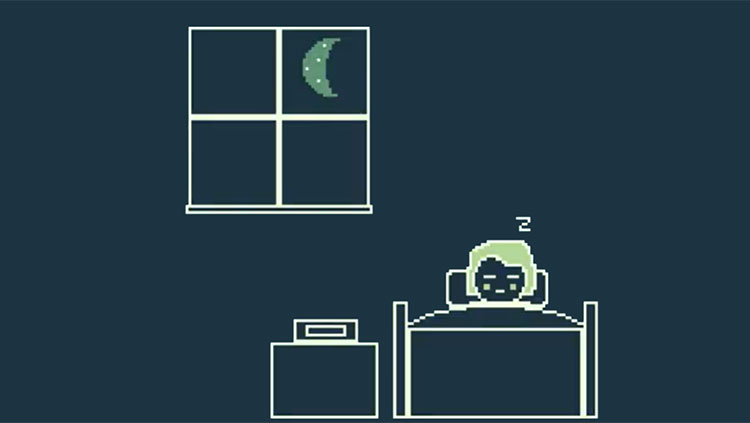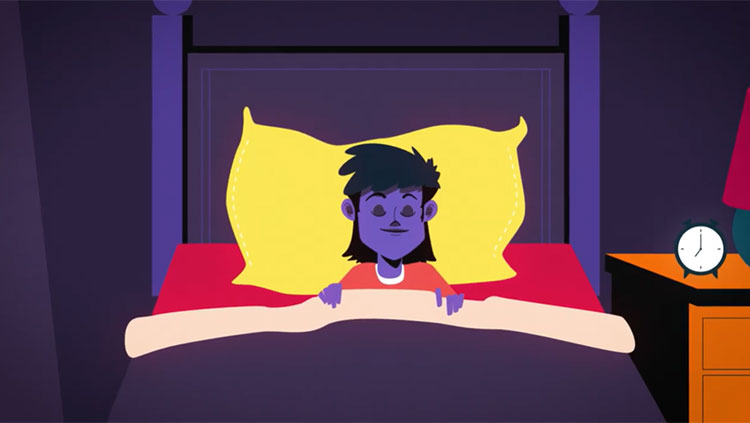What’s in Your Nightmares? The Top 5 Recurring Dreams of Adults and Kids
- Published29 Sep 2015
- Author Douglas Fields

We spend a third of our life in a completely altered state of consciousness, indeed madness. Dreaming is a descent into what would otherwise be a severe form of psychosis, and often these hallucinations are terrifying. Dreams that reoccur are especially disturbing, and nearly everyone has experienced them. A new study reveals the most common content of recurring dreams and finds very different hallucinations in the dreaming minds of adults and children.
What’s in your dreams -- especially dreams that revisit night after night? Are you flying high above the heads of other people in gleeful euphoria? Are you sharing a tender moment with a loved one in a beautiful surrounding? Or are you terror struck, running for your life from a monster or murderer, immobilized by paralysis or rendered mute as an intruder breaks into your bedroom. Maybe you are tumbling through the air helplessly or badly injured?
The first finding of this study of several hundred boys and girls between the ages of 11 and 15, by Aline Gauchat, Psychologist at the Université de Montréal and colleagues, is that most reoccurring dreams are not pleasant. They are most often terrifying confrontations with deadly threats of some sort. But the reoccurring dreams of kids, adolescents, and adults differ in interesting ways.
There is a long history of research on dreams of adults, but according to Gauchat, their new study published in the journal of Consciousness and Cognition is the first to investigate the content of recurrent dreams reported directly by children. Up to now, insight into recurrent dreams of children was gleaned by questioning adults about their personal memories of their childhood dreams. Such recollections are likely to be unreliable, as memory fades and can be very selective.
Here are the most common themes of recurrent dreams categorized in the present study:
Common themes in recurrent dreams
Being chased (Dreamer is chased but not physically attacked)
Physical aggression (Threat or direct attack on one’s person or character, including sexual aggression, murder, being kidnapped or sequestered)
Falling (Feeling of falling in mid-air, off cliffs or from another elevated object)
Car accidents (The dreamer or another character is involved in a car accident)
Contact with strangers
Death of the dreamer
Death in the family
Confrontation (Dreamer is confronted by monsters, animals, zombies, or similar creatures)
The dreamer is injured or ill
Stranger entering the dreamer’s house (A stranger is breaking into the dreamer’s house or trying to enter it)
Being stuck or trapped
Others (Dreams including flying or of control and facing natural forces as well as other idiosyncratic themes)
The first finding was that only 9% of the recurrent dreams of children between the ages of 11 and 15 were positive experiences. Most recurrent dreams involved serious threats, with confrontations with monsters, animals or zombies, being the most frequently reported category. The next most common theme in recurrent dreams of children involved threats of physical aggression, falling, and being chased. In 87.9% of the children’s dreams, the dreamer is the target of the threat. Themes involving car accidents occurred in 6.9% of boys and girls, but the threats to girls were twice as likely to be related to being chased (11.3% vs. 6.5%). All the other common themes reported in recurrent dreams comprised only 6% of the narratives children reported.
It is interesting to compare these new results with a 1996 study by Zadra et al., on 110 adults. As with children, most of the recurrent dreams of adults were disturbing (77.3%). In contrast to children where 45.5% of the threats involved recurrent dreams of aggression and violence, this theme dropped to third place in the top 5 themes of content in adult recurrent dreams, with escapes and pursuits being the most commonly experienced recurrent dream of adults (25.9%). Interestingly, dreams of physical anomalies were common in the recurrent dreams of adults, but this terror was absent from the sampling of children reporting their dreams.
Table 1. Most common recurrent dreams of children
1.Aggression and violence (45.5%)
2.Accidents and misfortunes (28.8%)
3.Escapes and pursuits (22.7%)
4.Disasters (4%)
Dreams about failures and physical anomalies were not reported by children.
Table 2. The most common recurrent dreams of adults
1.Escapes and pursuits (25.9%)
2.Accidents and misfortunes (19.7%)
3.Aggression and violence (19.0%)
4.Physical anomalies (17%)
5.Failures (6.9%)
Dreams that the researchers found were absent from interviews with children, were the adult dreams of losing one’s teeth, being unable to find a private toilet, and discovering or exploring new rooms in a house. One striking result was that while friendly interactions were present in almost one third of girls’ recurrent dreams, they occurred in fewer than 3% of boys’ recurrent dreams. In studies of adults, women’s bad dreams are more frequently centered around interpersonal conflicts and women’s dreams are twice as likely to contain friendly interactions as men’s are.
What’s it all mean? The authors speculate that recurrent dreaming is related to life stresses and that imagining these threats in a dream state simulates threatening events of real life, thereby enabling our mind to rehearse strategies to avoid and confront such threats. Since real world threats to boys and girls, men and women, are somewhat different, so too are their threatening recurring dreams. Children are much more likely to experience threats from imaginary creatures and monsters than adults are. Adults, through life experience, have learned that monsters do exist, but they are usually human beings.
References
Gauchat, A., Seguin, J.R., McSween-Cadieux, E., and Zadra, A. (2015) The content of recurrent dreams in young adolescents. Consciousness and Cognition37, 103-111.
Photo credit:By the author, from the catacombs beneath the streets of Paris.
Also In Sleep
Trending
Popular articles on BrainFacts.org

















